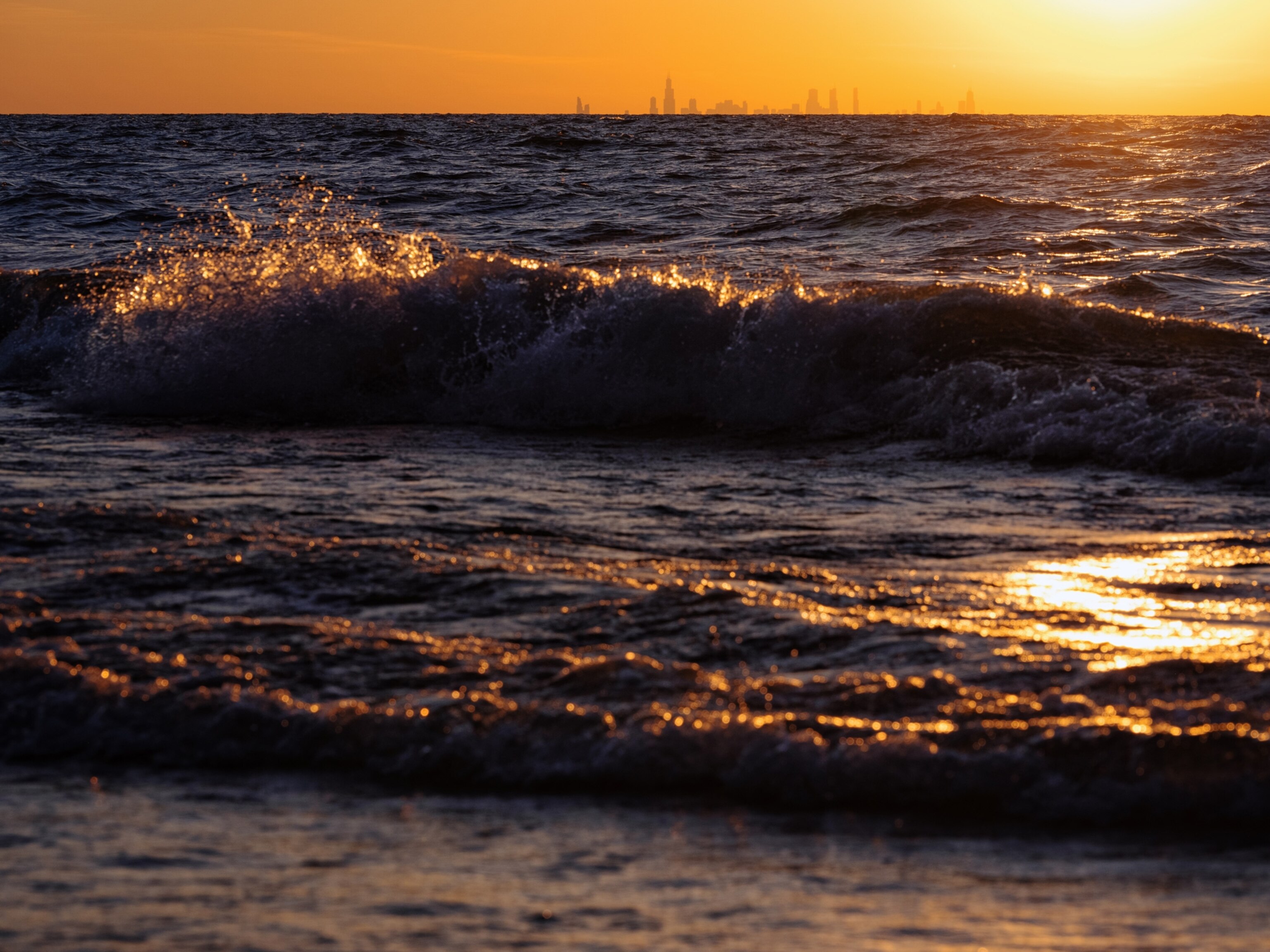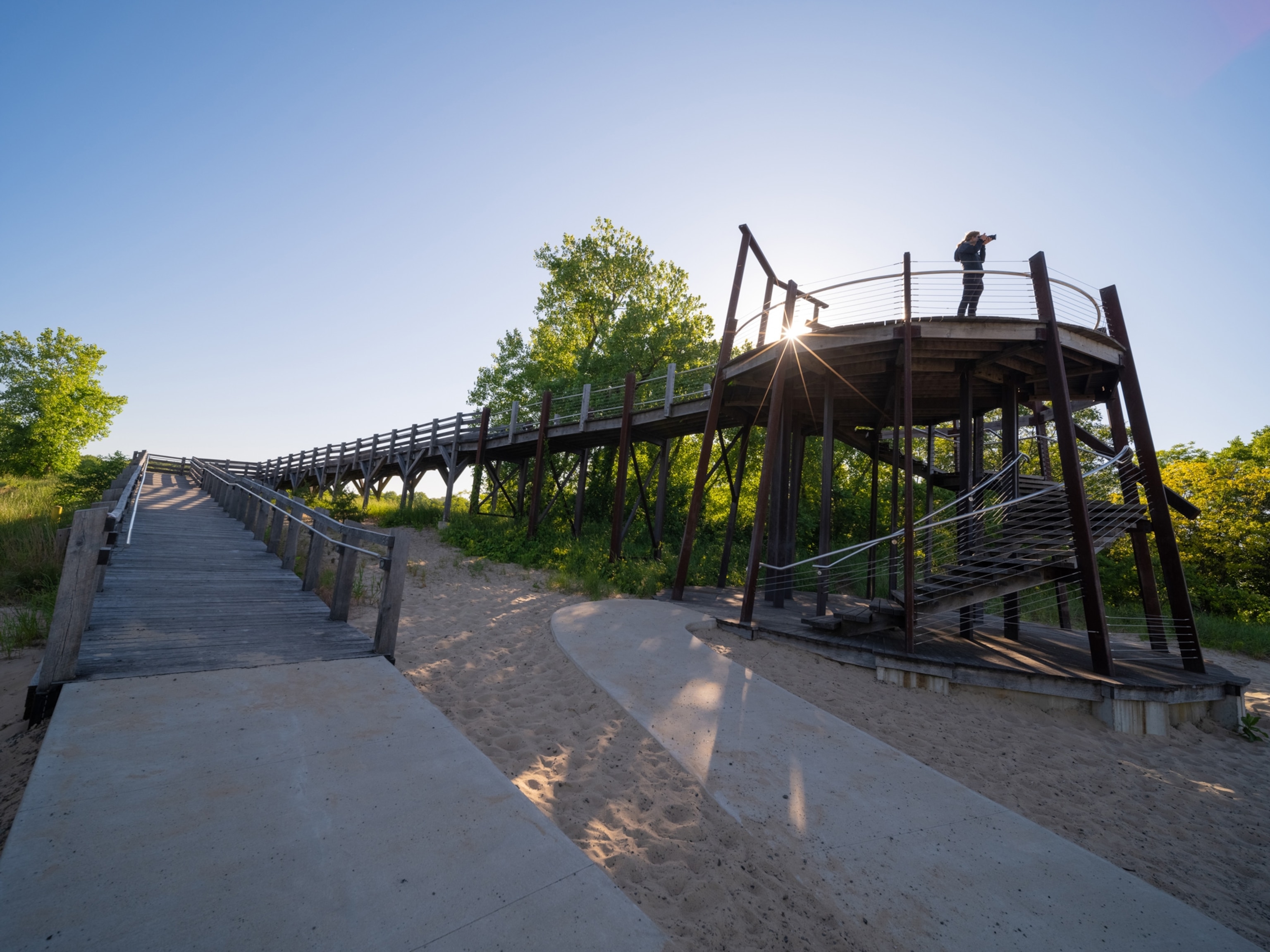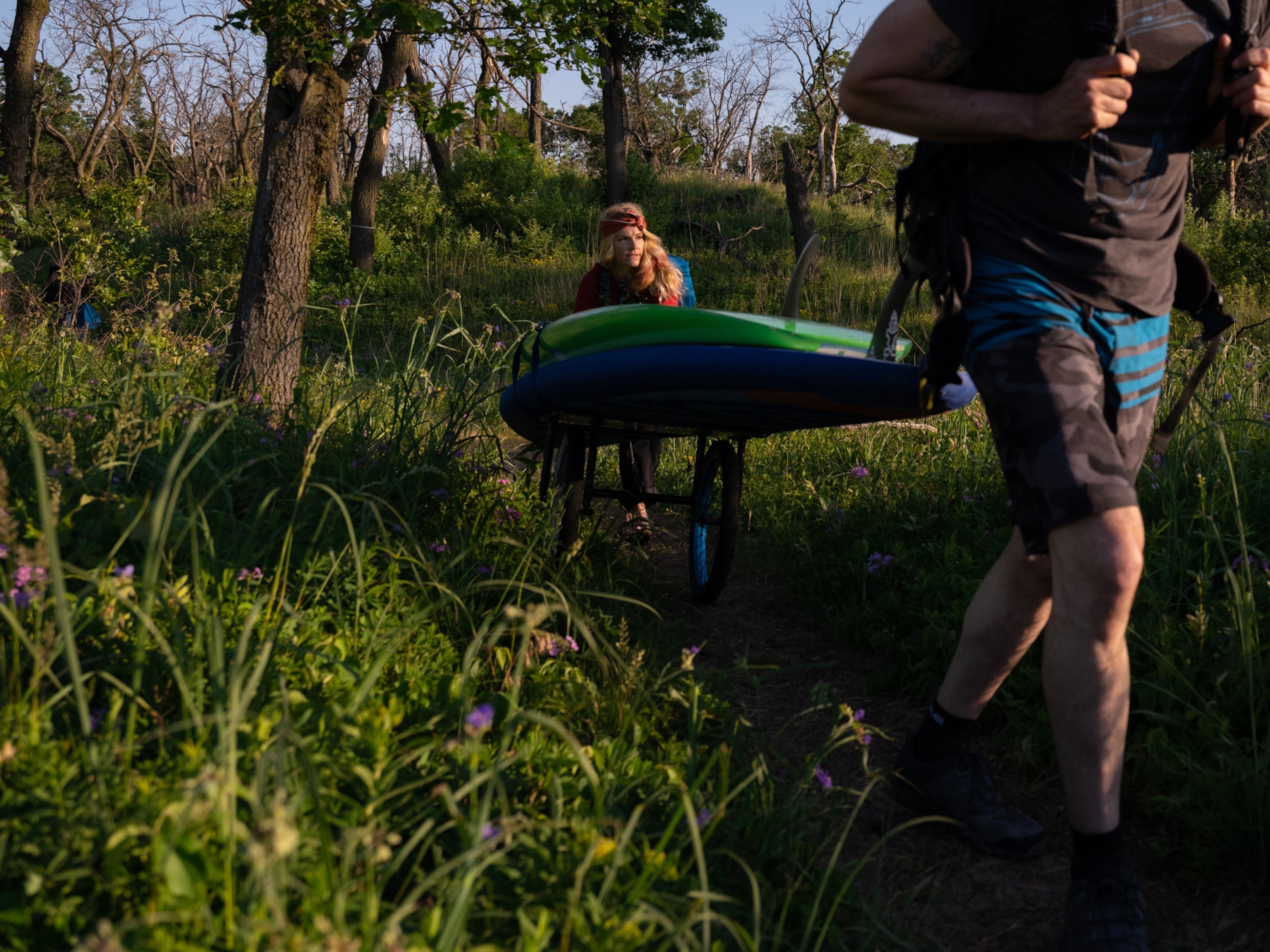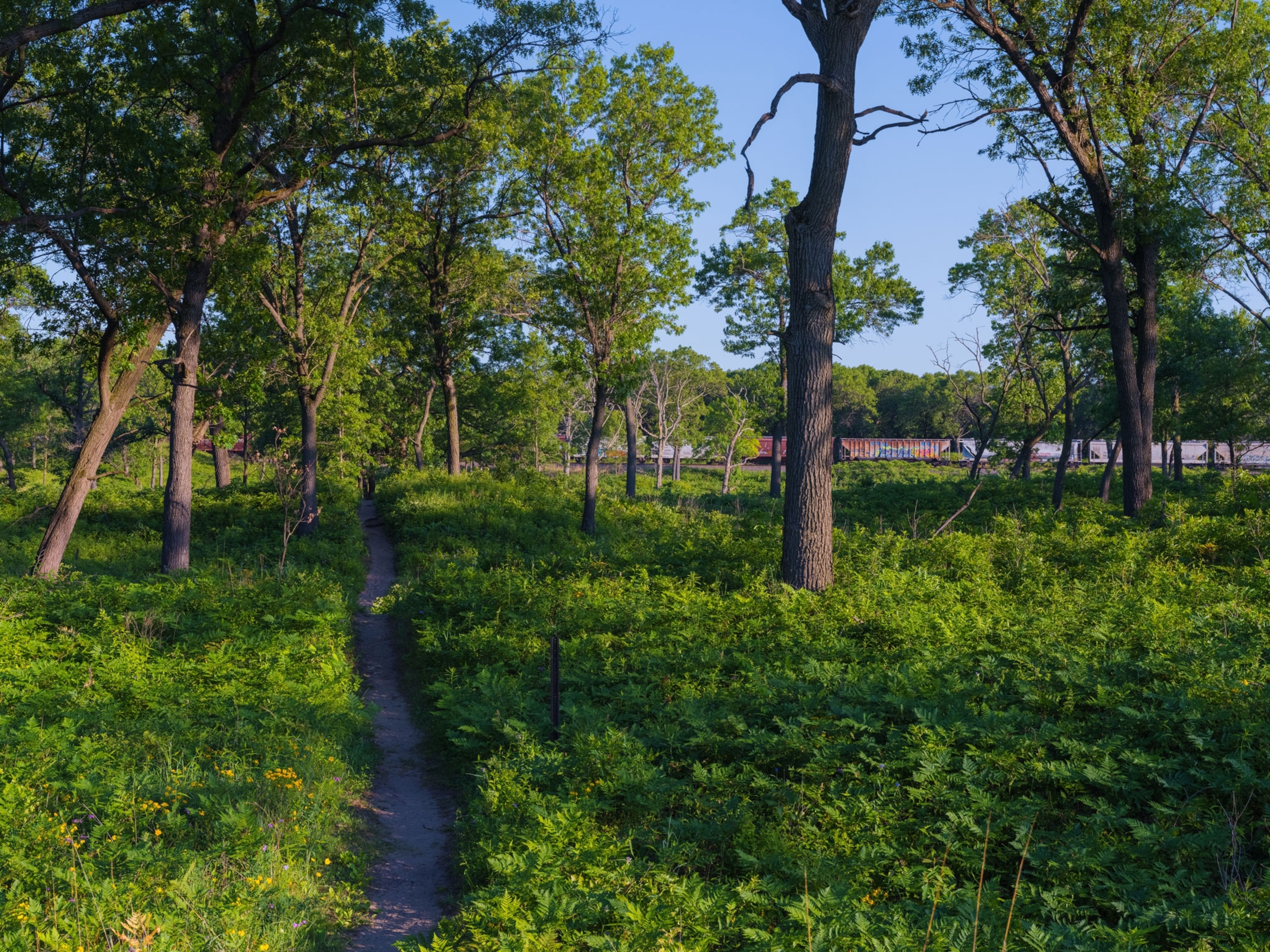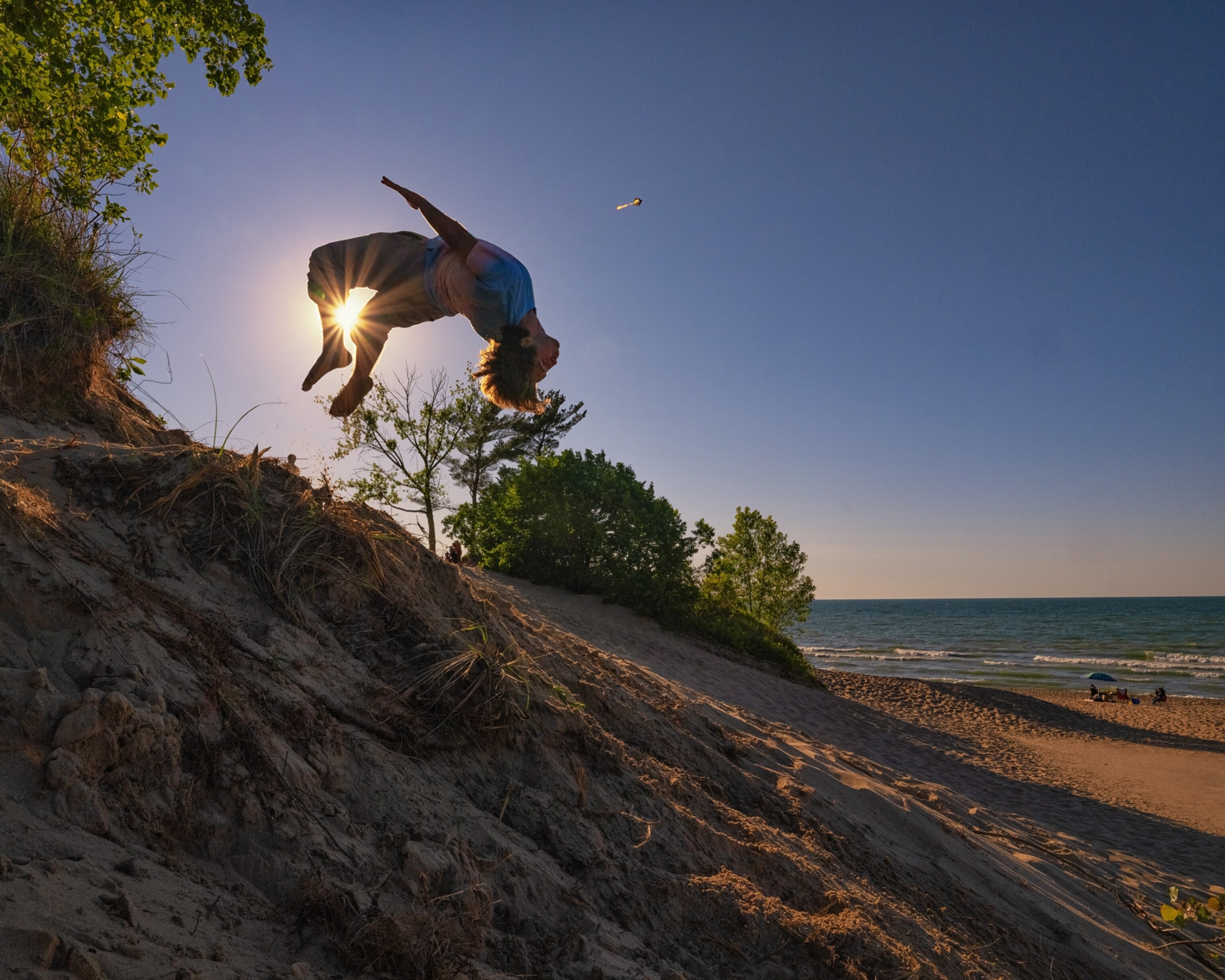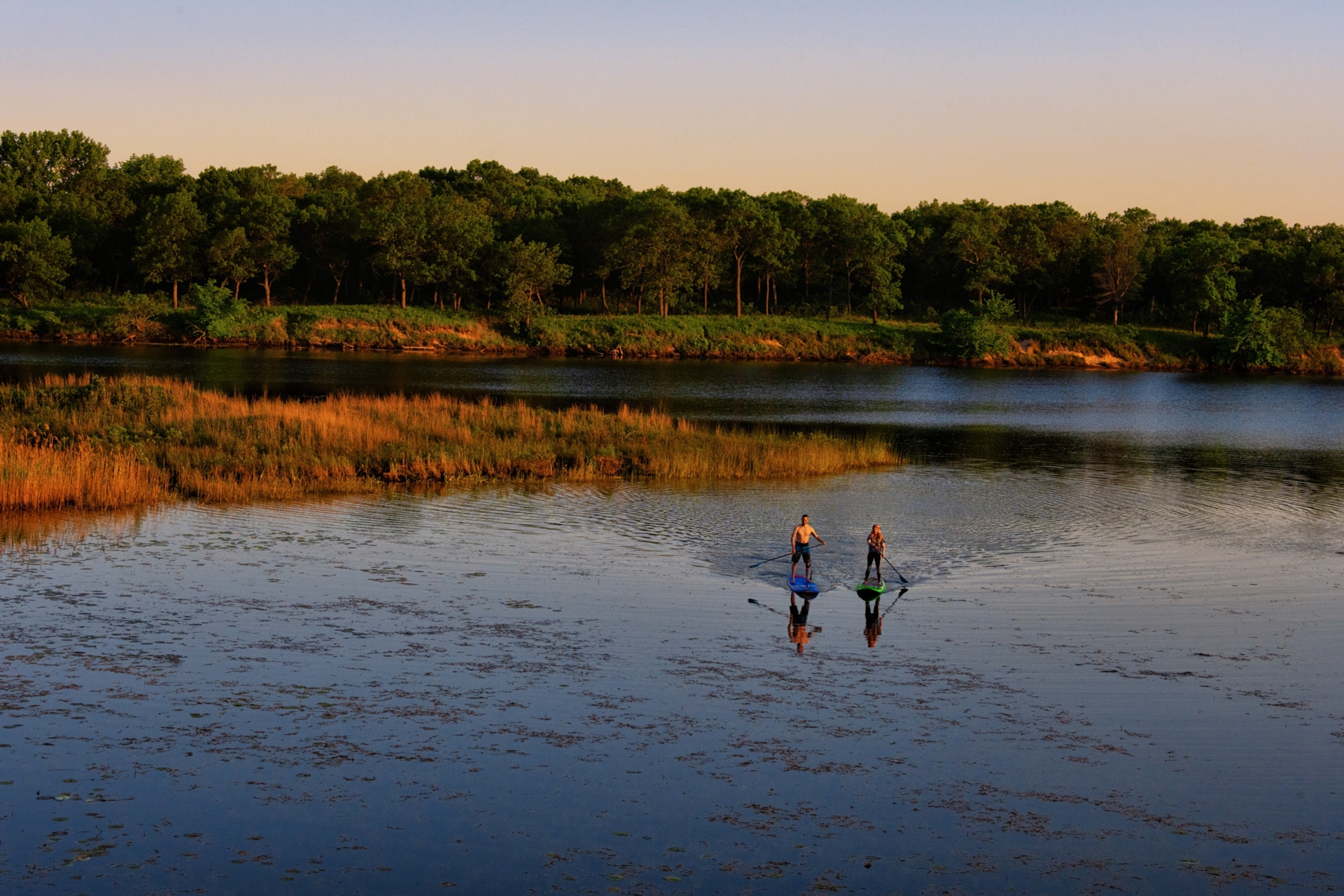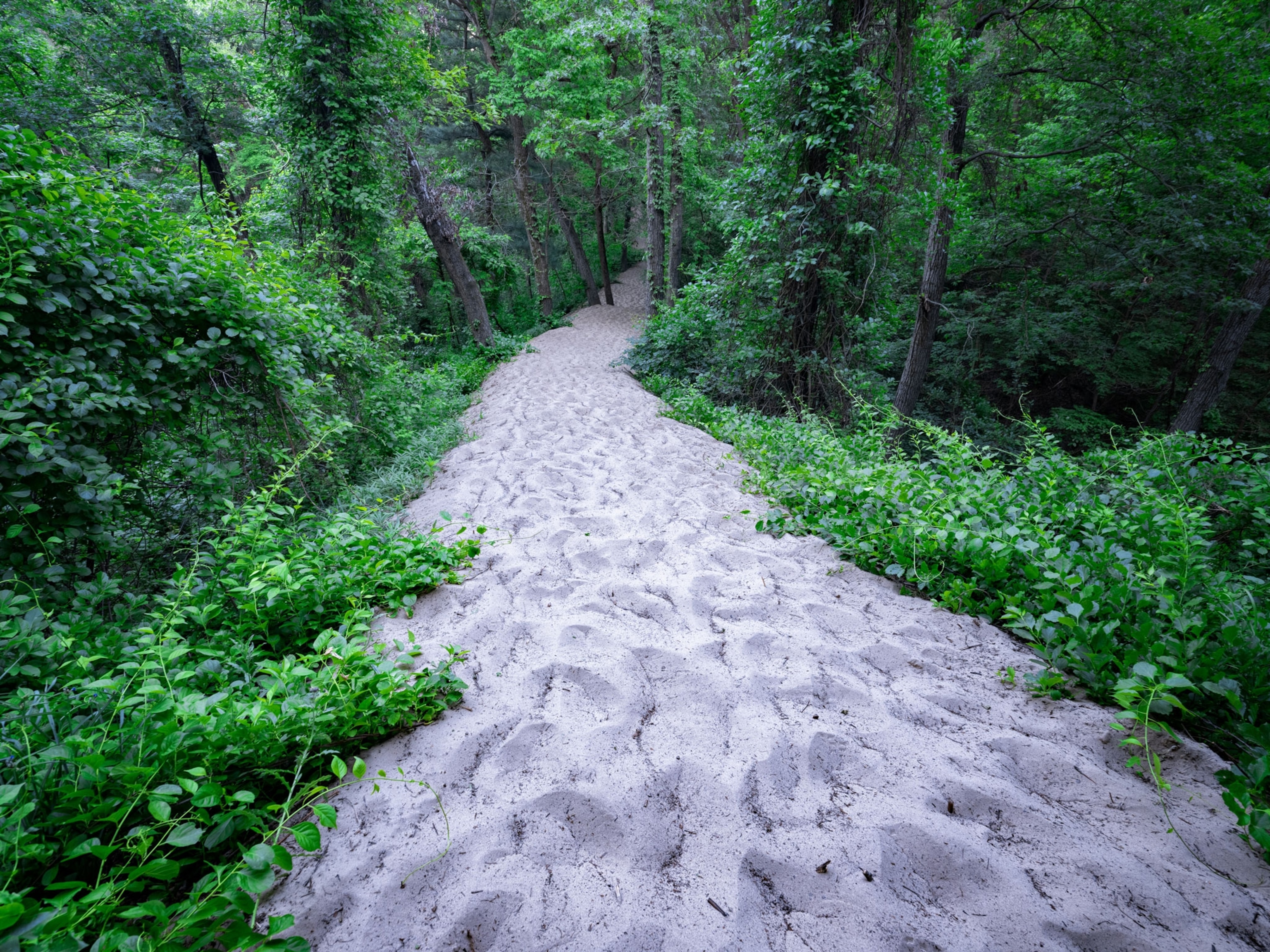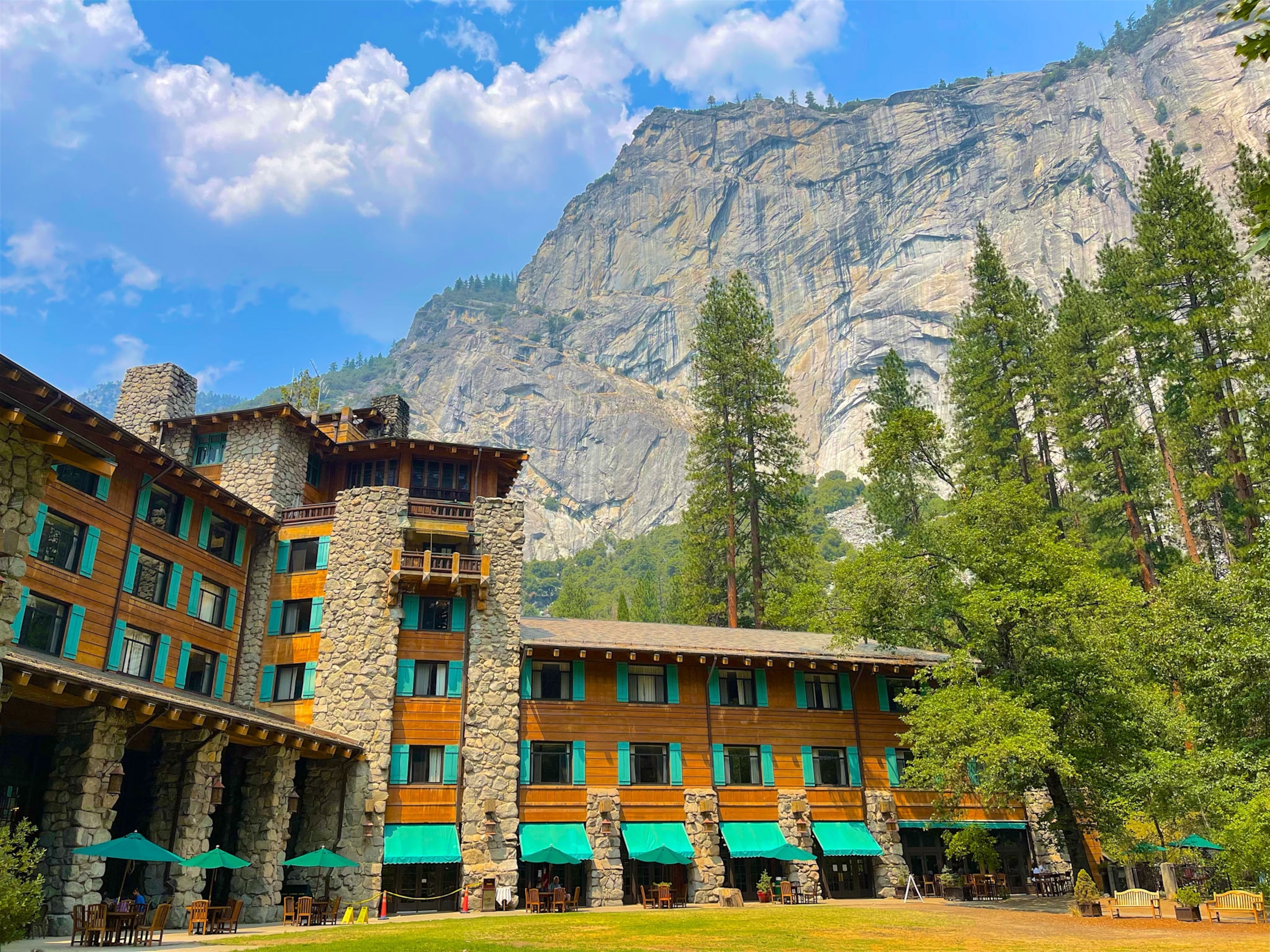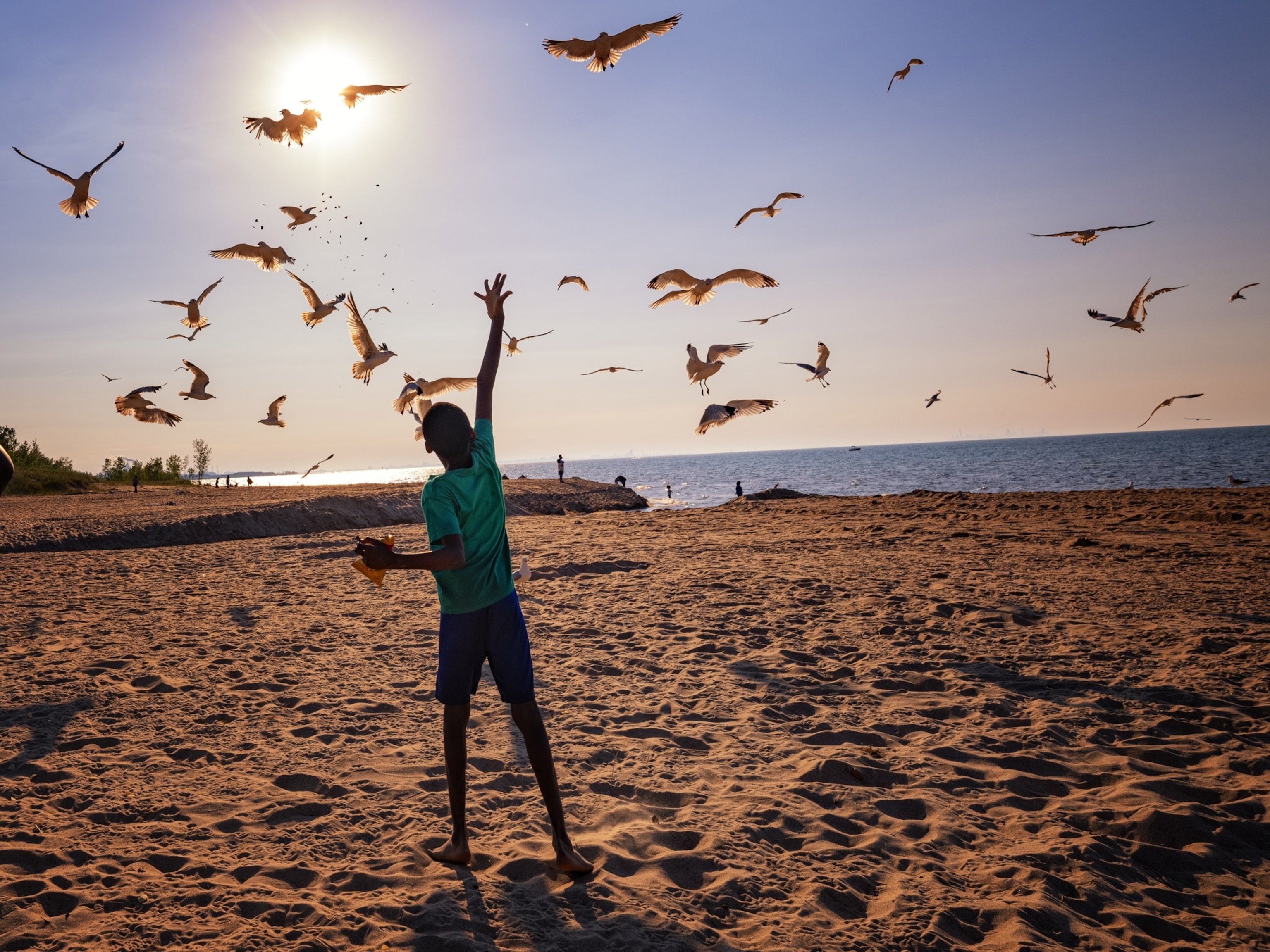
This national park draws huge crowds. The pandemic makes that burden worse.
In its first full year as a national park, Indiana Dunes has had a steep learning curve.
A sandy crescent of Lake Michigan shoreline, Indiana Dunes National Park is a 15,000-acre stretch that feels a world apart from the steel mills that loom on its horizon. Less than an hour from the third-largest city in the United States, the park presents an easy escape into nature—and not just for Chicagoans. Last year, some 3.6 million people visited Indiana Dunes and its adjoining state park; a combined figure that would place this landscape among the top seven most visited national parks in the country.
This popularity is partly due to Indiana Dunes’ recent redesignation: In February 2019, it became the nation’s 61st national park. Park staff were already expecting a record-breaking 2020. And then the coronavirus pandemic hit, unexpectedly bringing in even greater crowds.
With Chicago’s closure of its beaches in late March (followed by nearby Michigan City’s coastal closure in July), the Indiana Dunes staff has been braced for visitation to continue breaking records. The crisis they face: How to enforce social distancing at a national park that draws Yellowstone-size crowds—but with only one percent of Yellowstone’s acreage?
The COVID skyrocket
“National park attendance rose 21 percent in 2019,” says Lorelei Weimer, executive director of Indiana Dunes Tourism, which runs the visitor center shared with the National Park Service. The national designation immediately attracted a new demographic, she says. “Before then, people came for the beaches. Now, they’re die-hard national park visitors.”
Weimer reports that the visitor center usually sees just under 100,000 walk-ins a year; in 2019, that number increased 83 percent, thanks to tourists from a record 64 different countries. “We had no way of being prepared,” Weimer says. “The real heroes are our staff and rangers. There were almost 2,000 visitors a day for Fourth of July weekend [in 2019].”
Now, largely thanks to COVID-19, every day at Indiana Dunes National Park is like the Fourth of July.
Approach the rangers in the COVID-distanced tent outside the visitor center—they’ll be there through Labor Day—and you’ll hear a chorus of comments on “holiday crowds.” Visitors are flocking to the Dunes in record numbers to combat cabin fever, despite summer’s aching heat and high humidity. Even mid-week, parking lots buzz by 10 a.m.
“Most of our beach sites fill up early in the morning and stay full for the entire day, every day,” explains Shelby Hoyert, park ranger and life-long area resident. “Before COVID, we would only fill up on weekends.” Even the Cowles Bog Trail—a previous “hidden gem” of the park, Hoyert notes—has become a major destination.
(Related: Summer has brought hectic crowds to U.S. national parks.)
Fortunately, the staff isn’t entirely in new territory.

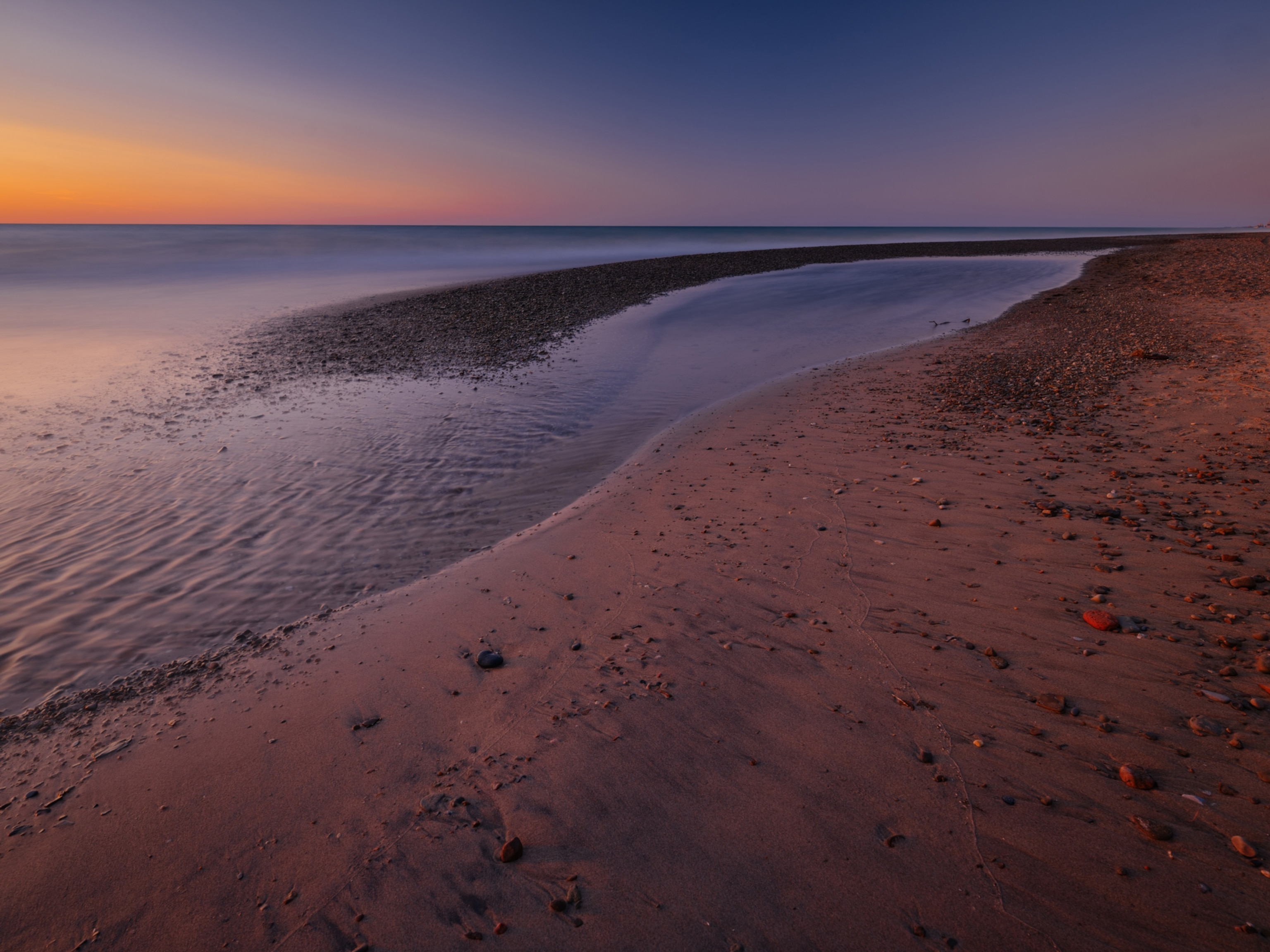
“2019 turned into a very exciting and wonderful visitor season,” writes Park Superintendent Paul Labovitz in an email. “It jazzed up our staff [to have] new visitors from all over.” Thanks to last year’s boom, Labovitz says, staff can better predict visitor needs and questions during the coronavirus boom—a skill needed now more than ever.
Being a tiny, fee-free national park within a few hours of some 8 million urbanites, Indiana Dunes seems primed to become a pandemic petri dish akin to Florida’s swarming spring-break beaches. Even without famous lodges, cramped shuttles, or hands-on museums, crowds still need to be managed.
(Related: Is it safe—or ethical—to go hiking during the pandemic?)
Indiana Dunes’s staff hasn’t increased. Instead, rangers and officers from various other parks and police departments supplement park law enforcement. With public programming canceled, these staff now patrol beach parking lots to promote social distancing—as much as they can.
“Folks seem to think just being outside gives them a chance to ignore social distancing,” writes Labovitz. “Smarter folks who are concerned can find a secluded spot just by walking east and west of the crowds.” The popular state park—home to even higher dunes—is only accessible by driving through the national park, which often takes up to an hour.
“We can only control our own behavior,” Labovitz says. “Our staff works hard at providing a place for visitors to experience this national park, and we will continue to place our health and safety as the highest priority.”
Managing—for now
Following the Chicago beach closures, park rangers and visitor center staff are urging beachgoers to stick to the West Beach area, which has more parking than the entire east section of the park combined. Visitors seem to be listening, Hoyert says: attendance there has doubled compared to 2019.
(Related: Here’s why some people can’t resist crowds despite the pandemic.)
But listening seems to be selective. Mask recommendations and social distancing guidelines are going largely unheeded, especially on the sand. This reality—combined with local mandates and increased visitation projections—puts the park in a unique position. If area beaches are shuttering in the interest of public health, should Indiana Dunes follow suit?
“Closure is an option,” Labovitz says, though more stringent protocols would likely be a sooner step. “Stay tuned.”
For now, throngs of visitors will descend upon this tiny swath of Lake Michigan, likely unaware that experiencing it now may mean losing it later—a truth hardly unique to this brand-new national park.
